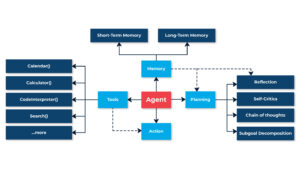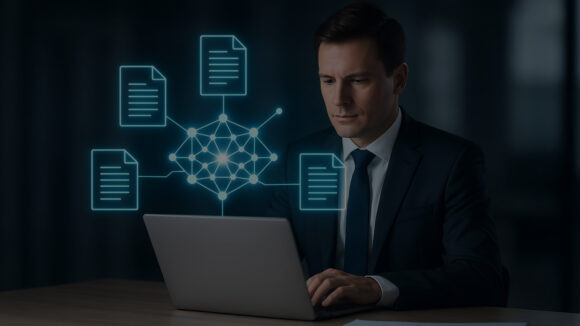Introduction
The idea of constructing agents centered around a large language model (LLM) is both thrilling and ground-breaking. From automated demonstrations based on GPT to initiatives like AutoGPT, GPT-Engineer, and BabyAGI, LLMs are proving their capability beyond simple text generation. These models are emerging as powerful problem-solvers, capable of handling complex tasks across various domains.
The Architecture of LLM-Powered Autonomous Agents
1. Planning
Planning is the at the heart of any autonomous agent. It involves breaking down complex tasks into smaller, manageable sub goals. This process is vital as it allows the agent to handle intricate tasks efficiently. Techniques such as the “Chain of Thought” (CoT) and “Tree of Thoughts” help in enhancing the model’s ability to decompose tasks and explore multiple reasoning pathways, making planning more robust and dynamic.
2. Memory
Memory in autonomous agents functions similarly to human memory, categorizing into short-term and long-term variants. Short-term memory relates to the model’s immediate ‘in-context’ learning, while long-term memory involves retaining vast amounts of information over extended periods. This is often achieved through external memory systems that can perform rapid retrieval operations, crucial for maintaining a broad and accessible knowledge base.
3. Tool Use
The capability to use external tools represents a significant leap towards enhancing LLM capabilities, extending their functionality beyond pre-trained limitations. This includes accessing up-to-date information, executing code, or tapping into proprietary databases. Tools like MRKL and Toolformer exemplify how models can interact with specialized external resources to perform specific tasks more effectively.

Practical Applications and Innovations
1. Task Decomposition and Planning
Models are trained to “think step-by-step,” which improves their performance on complex tasks. Some innovative approaches like using external classical planners with PDDL (Planning Domain Definition Language), showcase how LLMs can be integrated with other systems to enhance their planning capabilities.
2. Self-Reflection
The ability to self-reflect allows agents to learn from past actions and continuously improve. Techniques like ReAct and Reflexion enable models to critique their own outputs and adjust future actions, increasing the efficiency and accuracy of task execution.
3. Memory and MIPS
Memory systems in autonomous agents are akin to human memory but optimized for speed and efficiency using techniques like Maximum Inner Product Search (MIPS). Different algorithms such as LSH, ANNOY, HNSW, and FAISS are employed to manage and retrieve information quickly from large data sets, ensuring that agents have quick access to the necessary information.
4. Utilizing External Tools
With the integration of external tools, LLMs can perform a variety of tasks that were previously out of reach. Whether it’s calling APIs for specific information or interacting with different data sources, the ability to extend beyond the model’s initial training data is crucial for real-world applications.
Conclusion
As we continue to integrate LLMs with advanced planning, memory, and tool utilization features, the potential for autonomous agents increases significantly. These agents are not just tools but collaborators that can assist in a wide range of activities, from simple tasks to complex decision-making processes. The journey of LLM-powered autonomous agents is just beginning, and the possibilities are as vast as our imagination.





